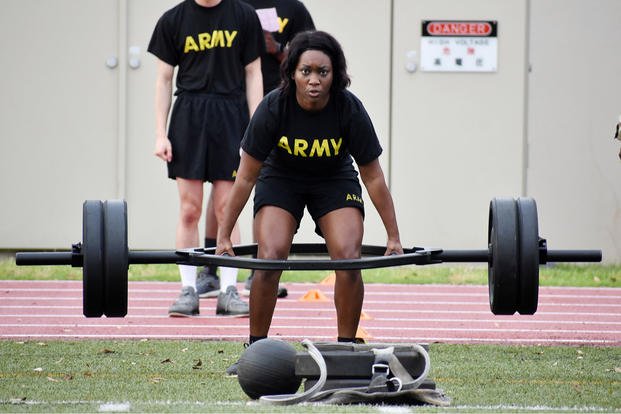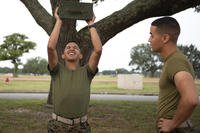Tactical athletes must take very different approaches when either looking to improve or just maintain their fitness levels. Those goals will fluctuate depending on the current situation, training requirements, selection program and the actual job itself.
It’s important to understand your specific goals. Do you need to rebuild, improve or max out certain elements of fitness? Or does your current situation at work and previous tactical fitness development allow you to focus on maintaining your current levels?
Should You Be Looking for Improvement or Maintenance?
Improvement
The tactical athletes who most need to focus on improving fitness standards are the ones who are seeking a change in status, like a change from civilian to military, from military to special ops, or as an active member who’s seeking to rebuild after an injury.
Improvement will require a balanced approach. The tactical athlete must master a combination of strength, power and grip; speed and agility; muscle stamina and endurance (run, ruck, swim); and flexibility and mobility.
As you work to develop a weakness into a strength, remember that not all these elements of fitness work well together. For instance, getting stronger in the power lifts (deadlift, bench, squats) while simultaneously improving pace in longer timed running events (3-5 miles) is very difficult if not nearly impossible for most people. Even 1.5- to two-mile timed runs will be difficult for powerlifters who still are lifting heavy while trying to develop running skills.
Here is the result you can expect: You will not get stronger, nor will you get faster at the distance timed runs. You can increase sprint speed. Like a football player in preseason training, you can work on strength, power, speed and agility during the same phase of training, but you may want to focus on muscle stamina and cardio endurance training during the same cycle since those elements of fitness work well together.
Check out the improvement tips below.
Strength and power: Lay off the high-rep calisthenics and long-distance cardio for a workout cycle. A four- to eight-week period works well for a lift cycle that focuses on these foundational elements of fitness.
Cardio endurance: Lay off the heavy weightlifting (lighter lifts are fine) and focus on muscle stamina and running, as well as non-impact cardio endurance (bike, elliptical, swim, row). This approach will help with heart and lung development without the added impact of running and rucking all the time. Focus on your goal pace and building a progressive running plan to avoid injury.
Muscle stamina (PT test events): Focus more on calisthenics during your training instead of heavy weight training. Exercises like pull-ups and push-ups will start out as strength exercises for your first few reps and become endurance exercises once you reach 20+ reps. You may have to start with a weight exercise like pull-downs, rows or biceps curls to develop the initial pulling strength to do a pull-up. Once you do that, focus on building muscle stamina (strength-endurance) over a cycle that includes workouts like pyramids, super sets, and max rep sets.
Flexibility and mobility need to be pursued, regardless of whether you’re in an improvement or maintenance phase. They will enhance training performance and help with recovery and reduce the potential for injury. As you age, these will become important elements of fitness that you cannot afford to ignore. While you are young, start learning how to add these to your day. Don’t Skip Mobility Day.
Maintenance
Tactical athletes in a maintenance phase should be focused on staying job ready and mitigating job and training stress. This process requires work, but past efforts and training accomplishments have given the tactical athlete a high level of fitness and mission-capable body and mind.
The approach is a bit different from the improvement process, as maintaining the above elements of fitness is much easier than seeking to improve a few of them while maintaining the remaining strengths on the list.
All-encompassing workouts are an option for the well-tuned tactical athlete who has developed weaknesses into “almost” strengths. Mixing calisthenics with weight training and following up with a variety of cardio options is a standard method that uses muscle stamina and endurance exercises to warm up, add weights for strength and power, and wraps up with a variety of cardio to focus on endurance, speed and agility.
Obstacle course workouts are a good activity for a job-related cardio and agility day. Some people still prefer to cycle through the year with regularly timed strength and power cycles, higher-rep calisthenics with lower-weight cycles, and running and cardio cycles. Seasonal tactical fitness periodization does offer some “off-time” that can prevent the excessive workouts that lead to potential injury.
When you’re in a maintenance phase, don’t look to push your perceived limits. Stay in a zone of mission readiness, keep yourself injury free and mitigate job stress with focused mobility, mindfulness and flexibility training.
How you should train depends on your goal and what you need to work on to develop weaknesses into strengths. Maintenance of developed strengths can be difficult, but it is always easier than working to overcome weaknesses while maintaining opposite strengths.
How you should train depends upon your fitness history, injury history, tactical job or upcoming training or deployment. All these factors matter when you’re creating the best programming for you and your tactical unit’s needs.
No matter what, you should work on all the elements of fitness throughout the year: strength, power, grip, speed, agility, flexibility, mobility, endurance and muscle stamina. Determine which ones are your weaknesses and where your focus should be. Your fitness foundation and future training challenge will determine how you develop your weaknesses into strengths and maintain your current strengths at competitive levels.
Stew Smith is a former Navy SEAL and fitness author certified as a Strength and Conditioning Specialist (CSCS) with the National Strength and Conditioning Association. Visit his Fitness eBook store if you’re looking to start a workout program to create a healthy lifestyle. Send your fitness questions to stew@stewsmith.com.
Want to Learn More About Military Life?
Whether you're thinking of joining the military, looking for fitness and basic training tips, or keeping up with military life and benefits, Military.com has you covered. Subscribe to Military.com to have military news, updates and resources delivered directly to your inbox.



















